Bohachevsky N. 2 Function
Mathematical Definition
\[f(x, y)=x^2 + 2y^2 -0.3cos(3\pi x)cos(4\pi y)+0.3\]Plots
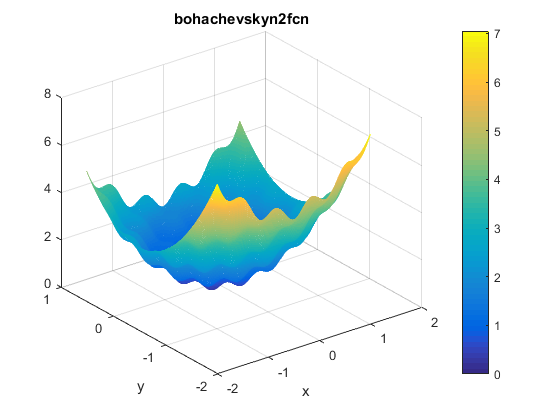
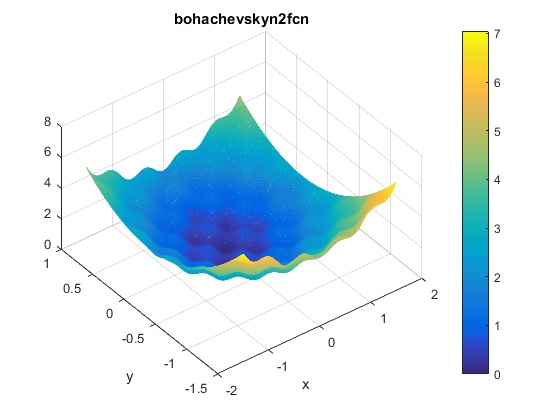
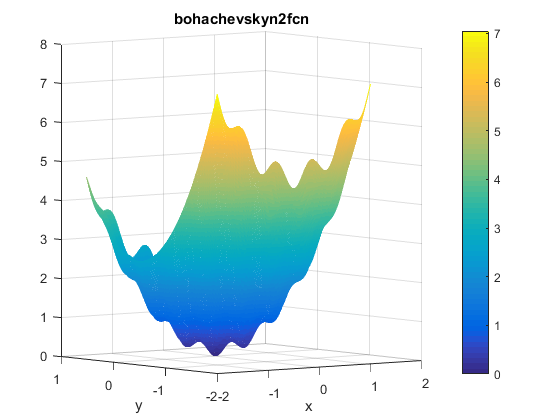
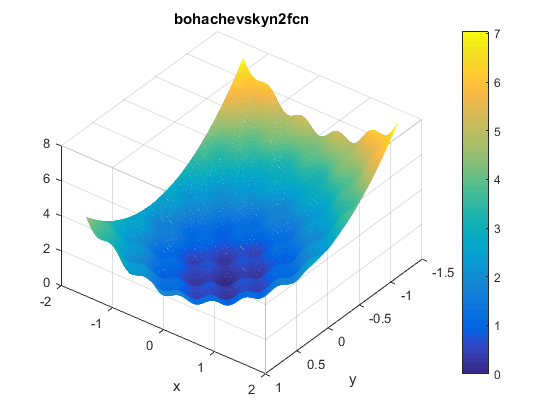
A contour of the function is presented below:
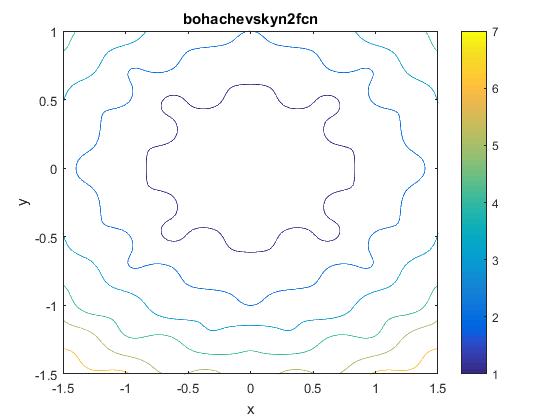
Description and Features
- The function is not convex.
- The function is defined on 2-dimensional space.
- The function is non-separable.
- The function is differentiable.
Input Domain
The function can be defined on any input domain but it is usually evaluated on $x_i \in [-100, 100]$ for $i=1, 2$.
Global Minima
The function has one global minimum $f(\textbf{x}^{\ast}) = 0$ located at $\mathbf{x^\ast}=(0, 0)$.
Implementation
Python
For Python, the function is implemented in the benchmarkfcns package, which can be installed from command line with pip install benchmarkfcns.
from benchmarkfcns import bohachevsky2
print(bohachevsky2([[0, 0],
[1, 1]]))MATLAB
An implementation of the Bohachevsky N. 2 Function with MATLAB is provided below.
% Computes the value of Bohachevsky N. 2 benchmark function.
% SCORES = BOHACHEVSKYN2FCN(X) computes the value of the Bohachevsky N. 2
% function at point X. BOHACHEVSKYN2FCN accepts a matrix of size M-by-N and
% returns a vetor SCORES of size M-by-1 in which each row contains the
% function value for each row of X.
%
% Author: Mazhar Ansari Ardeh
% Please forward any comments or bug reports to mazhar.ansari.ardeh at
% Google's e-mail service or feel free to kindly modify the repository.
function scores = bohachevskyn2fcn(x)
n = size(x, 2);
assert(n == 2, 'The Bohachevsky N. 2 function is only defined on a 2D space.')
X = x(:, 1);
Y = x(:, 2);
scores = (X .^ 2) + (2 * Y .^ 2) - (0.3 * cos(3 * pi * X)) .* (cos(4 * pi * Y)) + 0.3;
endThe function can be represented in Latex as follows:
f(x, y)=x^2 + 2y^2 -0.3cos(3\pi x)cos(4\pi y)+0.3References:
- Momin Jamil and Xin-She Yang, A literature survey of benchmark functions for global optimization problems, Int. Journal of Mathematical Modelling and Numerical Optimisation}, Vol. 4, No. 2, pp. 150–194 (2013), arXiv:1308.4008
- I. O. Bohachevsky, M. E. Johnson, M. L. Stein, “General Simulated Annealing for Function Optimization,” Technometrics, vol. 28, no. 3, pp. 209-217, 1986.